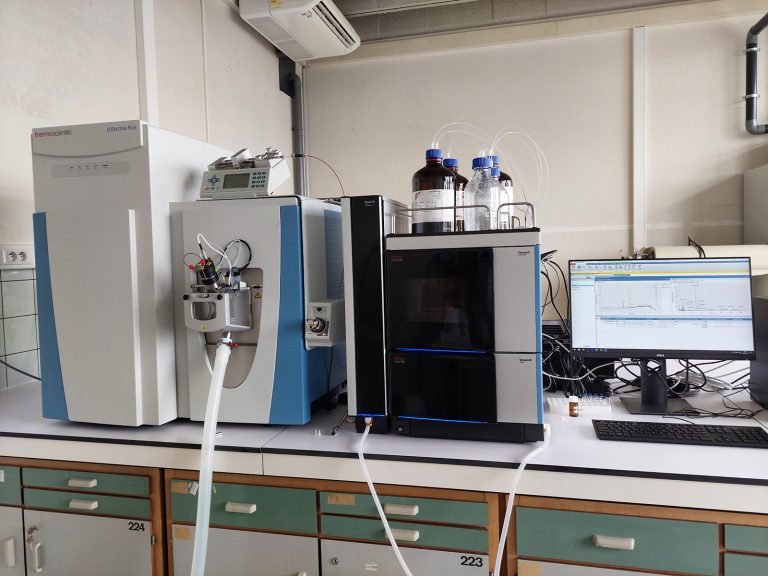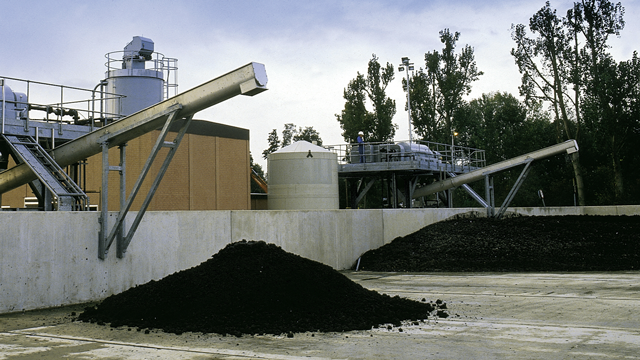Chemical Analysis: Advancements in Spectroscopy Techniques

Chemical analysis plays a crucial role in understanding the composition and properties of substances. It involves various techniques to identify and measure chemical components in samples. These methods help scientists and researchers gain valuable insights across many fields.
In everyday life, chemical analysis impacts us more than we might realize. From ensuring the safety of our drinking water to developing new medicines, analytical techniques are essential for maintaining public health and advancing scientific knowledge. Industries like pharmaceuticals, environmental monitoring, and food safety rely heavily on accurate chemical analysis.
The field of chemical analysis continues to evolve with new technologies and approaches. Improved analytical methods allow for faster, more precise measurements of complex mixtures. This progress enables better decision-making in areas such as pollution control, quality assurance, and medical diagnostics.
Key Takeaways
- Chemical analysis techniques identify and measure components in substances
- Analytical methods ensure safety in water, food, and pharmaceuticals
- Advances in technology improve the speed and accuracy of chemical analysis
Overview of Chemical Analysis
Chemical analysis is a vital field that examines the composition and structure of substances. It uses various methods to identify and measure chemical components in samples.
History and Importance
Chemical analysis has roots dating back to ancient civilizations. Early analysts used simple techniques to test metals and identify poisons. The field grew rapidly in the 18th and 19th centuries with the development of new tools and theories.
Today, chemical analysis plays a crucial role in many industries. It ensures product quality in manufacturing and helps solve crimes in forensics. Environmental monitoring relies on chemical analysis to detect pollutants.
Medical diagnostics use chemical tests to analyze blood and other samples. The food industry employs analysis to check nutritional content and detect contaminants.
Basic Concepts and Techniques
Chemical analysis involves both qualitative and quantitative methods. Qualitative analysis identifies the components in a sample. Quantitative analysis measures how much of each component is present.
Common techniques include:
- Spectroscopy
- Chromatography
- Mass spectrometry
- Electrochemistry
Chemical kinetics is important in understanding reaction rates and mechanisms. Analysts must consider factors like temperature, pressure, and concentration.
Sample preparation is a critical step. It may involve dissolving, filtering, or extracting the sample. Proper preparation ensures accurate results.
Data analysis is the final step. It often uses statistical methods to interpret results and draw conclusions.
Chemical Analysis of Water
Chemical analysis of water is crucial for ensuring safety and quality. It involves testing water samples to identify and measure various substances present. This process helps detect contaminants and assess water suitability for different uses.
Regulatory Framework
The Environmental Protection Agency (EPA) sets standards for drinking water quality in the United States. These rules specify maximum contaminant levels for many substances.
Water suppliers must regularly test their water and report results to regulators. This ensures compliance with safety standards.
Public water systems are required to provide annual reports to customers. These reports detail water quality and any violations of standards.
Sampling Methods
Proper sampling is key to accurate water analysis. Technicians collect samples from various points in the water system.
They use clean, sterile containers to avoid contamination. Samples are often preserved with chemicals or refrigeration.
For some tests, water must be collected at specific times or under certain conditions. This helps capture variations in water quality throughout the day or season.
Continuous monitoring systems can also track water quality in real-time. These systems use sensors to detect changes quickly.
Common Contaminants
Water analysis typically checks for several types of contaminants:
- Microorganisms: bacteria, viruses, parasites
- Inorganic chemicals: lead, copper, nitrates
- Organic chemicals: pesticides, industrial solvents
- Radionuclides: uranium, radium
pH levels are also important. They affect water taste and pipe corrosion.
High levels of minerals like calcium and magnesium cause water hardness. This can affect appliances and plumbing.
Dissolved oxygen is crucial for aquatic life. Low levels can harm fish and other organisms.
Analytical Methods
Analytical methods are essential tools for examining chemical compounds. They help scientists identify, measure, and understand different substances. These techniques range from simple tests to complex instruments.
Spectroscopic Techniques
Spectroscopy uses light to study matter. It looks at how substances interact with different types of radiation. UV-visible spectroscopy measures how compounds absorb or reflect light. This helps identify and quantify chemicals in a sample.
Infrared spectroscopy examines molecular vibrations. It can reveal the structure of organic compounds. Scientists use it to detect functional groups in molecules.
Nuclear magnetic resonance (NMR) provides detailed information about molecular structure. It uses strong magnetic fields to study atomic nuclei. NMR is crucial for determining the structure of complex organic molecules.
X-ray diffraction helps analyze crystalline materials. It shows how atoms are arranged in solids. This technique is vital in materials science and mineralogy.
Chromatography
Chromatography separates mixtures into their components. It uses two phases: a stationary phase and a mobile phase. The mobile phase carries the sample through the stationary phase.
Gas chromatography separates volatile compounds. It’s useful for analyzing complex mixtures like petroleum products. Liquid chromatography works with non-volatile substances. It’s common in pharmaceutical and environmental testing.
High-performance liquid chromatography (HPLC) offers high resolution and sensitivity. It can separate and quantify trace amounts of compounds. HPLC is crucial in drug development and quality control.
Mass Spectrometry
Mass spectrometry measures the mass-to-charge ratio of ions. It can identify unknown compounds and determine their structure. The technique works by ionizing molecules and separating the ions based on their mass.
Time-of-flight mass spectrometry offers high resolution. It’s useful for analyzing large biomolecules. Tandem mass spectrometry (MS/MS) provides detailed structural information. It’s valuable in proteomics and metabolomics research.
Mass spectrometry is often combined with chromatography. This powerful combination can analyze complex mixtures with high sensitivity and selectivity.
Wet Chemistry
Wet chemistry involves classical analytical methods. These techniques use chemical reactions in solution. They’re still important for many analyses, especially in water quality testing.
Titration measures the concentration of a substance in solution. It’s used to determine acidity, alkalinity, and hardness in water samples. Gravimetric analysis weighs a substance to determine its amount. It’s precise but time-consuming.
Colorimetric methods use color changes to measure concentrations. They’re simple and widely used for water analysis. Test kits based on these methods allow quick field testing of water quality.
Water and Wastewater Analysis
Chemical analysis of water and wastewater is crucial for ensuring safety and quality. It involves examining physical and chemical parameters to assess contamination and treatment effectiveness.
Comparison of Water and Wastewater
Water and wastewater differ significantly in their composition and analysis methods. Clean water typically contains fewer contaminants and requires less extensive testing.
Wastewater analysis is more complex due to its higher pollutant load. It often includes tests for biochemical oxygen demand (BOD) and chemical oxygen demand (COD).
Key parameters for both include:
- pH
- Turbidity
- Total dissolved solids
- Conductivity
- Hardness
Wastewater analysis also focuses on:
- Nitrogen compounds
- Phosphorus
- Heavy metals
- Organic pollutants
These tests help determine the effectiveness of treatment processes and ensure compliance with environmental regulations.
Treatment Process Analysis
Treatment process analysis is essential for optimizing water and wastewater purification. It involves monitoring various stages to ensure proper contaminant removal.
For drinking water, key analyses include:
- Chlorine residual
- Disinfection byproducts
- Microbial content
Wastewater treatment analysis focuses on:
- Solids removal efficiency
- Nutrient reduction
- Pathogen elimination
Regular testing throughout the treatment process helps identify issues early. This allows for timely adjustments to maintain water quality.
Advanced techniques like chromatography and mass spectrometry are used for detecting trace contaminants. These methods provide detailed information about specific pollutants present in water and wastewater.
Chemical Detection in Water Analysis
Water analysis uses various methods to find and measure chemicals. These techniques help ensure water safety and quality for drinking and other uses.
Detection Technologies and Instruments
Chemical sensors play a key role in real-time water quality monitoring. These devices can detect a wide range of contaminants quickly and accurately.
Spectrophotometers measure light absorption to identify chemicals. They’re useful for detecting metals and organic compounds in water samples.
Gas chromatography separates and analyzes volatile substances. It’s effective for finding pesticides and industrial pollutants.
Mass spectrometry identifies chemicals based on their mass-to-charge ratio. This method can detect very small amounts of contaminants.
Quality Assurance and Quality Control
pH testing is a crucial part of water quality control. It helps detect corrosive conditions that could release harmful metals into the water.
Regular calibration of instruments ensures accurate results. This involves testing equipment with known standards.
Blind samples are used to check lab performance. Analysts test these samples without knowing their contents.
Data validation involves reviewing results for errors or inconsistencies. This step helps catch mistakes before final reporting.
The EPA’s CANARY software helps detect water quality events. It analyzes data from multiple sensors to spot potential contamination quickly.
Applications and Case Studies
Chemical analysis plays a crucial role in various fields. Its applications range from ensuring product quality in industries to monitoring environmental pollutants and safeguarding public health.
Industrial Applications
Chemical analysis is vital in manufacturing and quality control. In the food industry, it helps ensure product safety and consistency. Analysts test for contaminants, measure nutrient content, and check for allergens.
In pharmaceuticals, chemical analysis verifies drug purity and potency. It’s used to detect impurities and measure active ingredients. This ensures medicines are safe and effective.
The oil and gas sector relies on chemical analysis to assess fuel quality. It’s used to measure sulfur content, octane ratings, and other key properties. This helps meet regulatory standards and optimize fuel performance.
Environmental Monitoring
Chemical analysis is key in tracking environmental pollutants. It’s used to test water quality in rivers, lakes, and oceans. Analysts measure levels of heavy metals, pesticides, and other harmful substances.
Air quality monitoring also depends on chemical analysis. It helps detect and measure pollutants like sulfur dioxide, nitrogen oxides, and particulate matter. This data guides efforts to reduce air pollution and protect public health.
Soil testing uses chemical analysis to assess soil health and detect contamination. It measures nutrient levels, pH, and the presence of pollutants. This information is crucial for agriculture and environmental remediation.
Public Health Implications
Chemical analysis plays a vital role in protecting public health. It’s used to test drinking water for contaminants like lead, bacteria, and chemicals. This helps prevent waterborne diseases and ensure safe drinking water.
In food safety, chemical analysis detects harmful additives, pesticides, and toxins. It’s crucial for enforcing food safety regulations and preventing foodborne illnesses.
Chemical analysis also aids in detecting and measuring harmful substances in consumer products. This includes testing for lead in toys, phthalates in plastics, and formaldehyde in building materials. Such testing helps protect consumers from potential health risks.
Emerging Trends and Future Directions
Chemical analysis is evolving rapidly with new technologies and methods. Improved instruments and automated systems are changing how scientists work. These advances make analysis faster and more accurate.
Advances in Analytical Techniques
Precision genome editing is opening new doors in chemical biology. Scientists can now study protein complexes in cells with greater detail. This helps them understand how reactions work at a molecular level.
Spectroscopy methods continue to improve. New handheld devices allow for on-site analysis. This is useful for environmental monitoring and quality control.
Nanosensors are becoming more sensitive. They can detect very small amounts of chemicals. This is important for medical diagnostics and food safety testing.
Automation and Data Analysis
Robots are taking over routine lab tasks. This frees up scientists to focus on complex problem-solving. Automated systems can run experiments 24/7, speeding up research.
Machine learning is changing data analysis. Computers can spot patterns humans might miss. This helps in drug discovery and material science.
Cloud computing allows for better data sharing. Scientists can collaborate more easily across the globe. This leads to faster breakthroughs in chemical research.
Chemical engineering departments are using these new tools to solve real-world problems. They’re working on clean energy, new medicines, and smart materials.
Frequently Asked Questions
Chemical analysis involves various methods, applications, and roles across industries. It plays a crucial part in quality control and has evolved with technological advancements. Let’s explore some common questions about this field.
What are the different methods used in chemical analysis in waters?
Chemical analysis in waters employs several techniques. These include spectrophotometry, chromatography, and electrochemical methods. Each method serves a specific purpose in analyzing water samples for different compounds and contaminants.
Can you describe the applications of chemical analysis in waters in various fields?
Chemical analysis in waters finds use in environmental monitoring, wastewater treatment, and drinking water safety. It helps detect pollutants, assess water quality, and ensure compliance with regulations. Industries like pharmaceuticals and food production also rely on water analysis for quality control.
What does a chemical analyst do in waters?
A chemical analyst in waters collects and tests water samples. They use specialized equipment to measure pH levels, detect contaminants, and analyze chemical composition. Analysts interpret results, prepare reports, and often recommend actions based on their findings.
How is chemical analysis in waters significant in industrial quality control?
Chemical analysis in waters is crucial for maintaining product quality and safety in industries. It ensures that water used in manufacturing processes meets required standards. This analysis helps detect impurities that could affect product quality or pose health risks.
What are the four main types of chemical analysis in waters?
The four main types of chemical analysis in waters are qualitative, quantitative, classical, and instrumental analysis. Qualitative analysis identifies substances present. Quantitative analysis determines the amount of each substance. Classical methods use traditional techniques, while instrumental methods employ advanced technology.
In what ways has technology impacted the accuracy and efficiency of chemical analysis in waters?
Technology has greatly enhanced chemical analysis in waters. Advanced instruments like mass spectrometers and automated systems have improved accuracy and speed. Digital data management and analysis software have streamlined the process, allowing for faster and more precise results.


